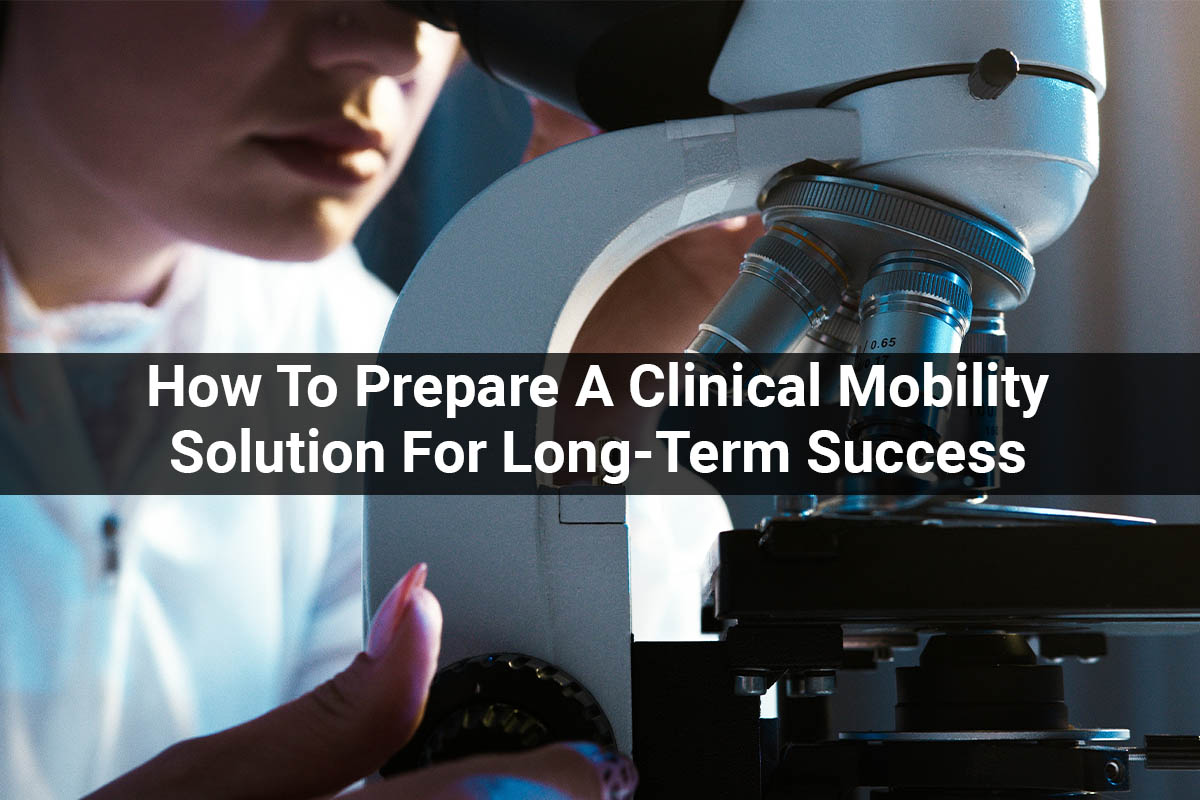How To Prepare A Clinical Mobility Solution For Long-Term Success
Constantly delivering cost-effective and safe patient care while ensuring smooth operations is a challenging task for the entire healthcare domain. However, even amidst the challenges, the task is a prerequisite for the success of healthcare organizations. In a typical healthcare setup, decision-making is time-sensitive, and in a number of instances, the clinicians do not have enough data pertaining to patient health and clinical decisions to make informed decisions in real-time. Accepting the critical role of information in patient care delivery and hospital management, healthcare organizations have doubled down their efforts behind the creation of clinical mobility solutions.
What is clinical mobility?
Clinical mobility solutions for healthcare revolves around using mobile devices like tablets, handheld mobile computers, and mobile printers, etc. for positively transforming patients’ care delivery inside a hospital. By integrating and combining new-gen technologies like the Internet of Things, Artificial Intelligence, clinical mobility in the healthcare industry is ushering a new era in the healthcare sector – one that is dominated by high quality, low delivery cost, and greater patient care centricity.

5 Reasons why every hospital should have a clinical mobility solution
There are a number of reasons which chart the need for creating a strategy for a healthcare mobility solution. Some of the top ones in the list include:
1. Real-time access to the medical records
Enterprise mobility in healthcare revolutionizes the way healthcare providers access patient records. The devices and EHR-centric solutions enable them to gather real-time access to the patient data without waiting on the administrative team to provide them the details.

2. Efficient clinical communication
By bringing medical data on mobile devices in text and voice format can help clinical staff communicate and coordinate in real-time, thus helping address patients’ needs in an effective and timely fashion. additionally, the mobile devices also enable pairing with healthcare wearables and other smart medical devices, thus making it possible for the clinicians to take a comprehensive decision.

3. Lower operation costs
By lowering the need for individual devices and replacing them with an all-encompassing enterprise mobility solution in healthcare, organizations get to save a significant amount of money. The upfront costs transform into long-term savings in terms of lower dependency on device hardware, IT support needs, and efficient staff management.
4. Strong patient data security
Accessing patient’s real-time data is one thing but ensuring that the data is 100% hack-proof is an altogether different ball game. Mobile technologies give healthcare organizations complete control over their patients’ data with easy-to-use device management tools.
5. Centralized device management
The wireless connectivity nature of clinical mobility devices aids remote and centralized device management. The healthcare app developers generally create a system wherein the hospital or clinic’s IT staff can access and monitor healthcare mobility equipment’s status, network connections, performance, and usage in real-time and then send in the notification if and when a problem arises.
How to build effective enterprise mobility for the healthcare industry?
The role of mhealth applications in healthcare evolution has been established as pivotal several times. What is less discussed is how to make a healthcare solution that is designed for success and high adoption.
1. Think of the growing mobile usage in healthcare setup
The success of a clinical mobility solution should start with identifying the foundational devices that administrators and clinicians use: tablets, smartphones, and laptops. Once it is established, they should move to the part where they look into fitting in the information and tools that the hospital staff needs to offer effective care to the patients and streamline the operational tasks.
2. Manage ownership of clinical mobility solutions
One of the crucial decisions that every healthcare organization has to take when it comes to the incorporation of a clinical mobility solution, is who will be responsible for the ownership of the system. Will the doctors who are interacting with the patients hold the responsibility of modifying the data or should it be done by the billing team?

3.Address healthcare industry compliances and policies
The healthcare industry is powered by several compliances and rules. Revolving around several domains, the crux of all the healthcare compliance is more or less the same – ensuring that the users’ data is protected. While your partnered healthcare app development company can help with the creation of solutions that follow the intricacies of the global healthcare compliances, it is also important to relook at the system backend with the same compliance-check point of view.

4. Have a patient-centric mobility solution
Even though the clinical mobility solution that we have discussed at length in this article is one that will be used by the clinicians or medical professionals, the outcome should be patient favoring. They should be designed to keep the patient wait time minimal, the discharge process hassle-free, and the insurance claim, bills clearance steps real-time & under three clicks. Additionally, the solution should be one that supports remote care through the adoption of video conferencing, wearables’ integration, etc.

5. Align the solution with the existing healthcare system
Before you start working on a mobility solution, ask your healthcare application development company to look into the infrastructure and system configurations commonly present in the hospitals and clinics in your area of operation. Irrespective of how well-designed and deployed your clinical mobility solution is if it fails to connect with the systems present in the healthcare organizations, the problems in terms of high operational cost and low adoption rate will only worsen.

Conclusion
The success formula of all the strategies and design, development approach followed for the creation of an efficient clinical mobility solution ultimately comes down to its ability to make healthcare operations real-time and patient-centric.








Leave A Comment
You must be logged in to post a comment.